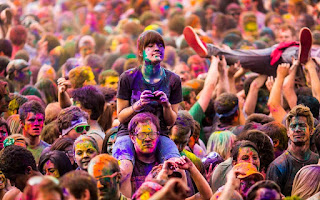The Islamic art
The term Islamic art or Islamic art applies to the artistic production that took place from the Migration (622 AD) until the nineteenth century in an area extending from Spain to India that is inhabited by groups of Islamic culture.
The nature of Islamic art
The most important characteristic of Islamic civilization is its intense focus on ethics, transaction, and worship more than the arts.
The Islamic civilization has gone through a number of important developments in its history.
At the beginning of the era of the caliphate - particularly in the era of the Right Guided caliphs – where the seat of the Islamic caliphate was in Makka Al – Mukarrama.
There, life was characterized by simplicity and asceticism.
Umayyad era
After the transformer of the caliphate to Damascus in the Umayyad era, this Islamic civilization was influenced by neighbor the Byzantine Empire, and other influence was through the extinct ancient (Phoenician) civilization.
Abbasid era
And in the Abbasid era, after moving the seat of the caliphate from Damascus to Baghdad, the influence was on the Persian civilization, and the Indian and Chinese behind it, as well as the extinct civilizations in the same place, Babylonian and Assyrian.
Islamic civilization - by virtue of the rules of the Islamic religion - is distinguished by its distance from the personification of humans and animals, but in return they excelled in drawing and decorating calligraphy.
Interaction with other civilizations
Islamic art represents an ancient and great civilization that interacted with various other civilizations in the world and produced immortal creations in various fields.
It is an integrated art that has emerged from the depth of Arab and Islamic culture, a long cultural history and a well-established identity, which was formed more than 14 centuries ago, which prompted UNESCO to dedicate an international day to celebrate this art.
Our image in this article shows that an animal-shaped or perhaps heart-shaped flask with its blood vessels, dating back to the Umayyad or Abbasid period, from the late 7th century AD to the 8th century AD, and most likely made in Syria.
During the Roman and early Islamic periods, containers were made in the shape of animals using intricately decorated double or quadruple glass tubes, and clad them with threaded glass that simulates protective cages, and vessels from such a vessel may have been used as containers for alcohol or perfume.
Perhaps this Islamic antique was an educational tool rather than an entertainment vessel, as we have already said, Islamic religious teachings forbid anthropomorphism.
 |
| the Islamic art |








(3).png)
